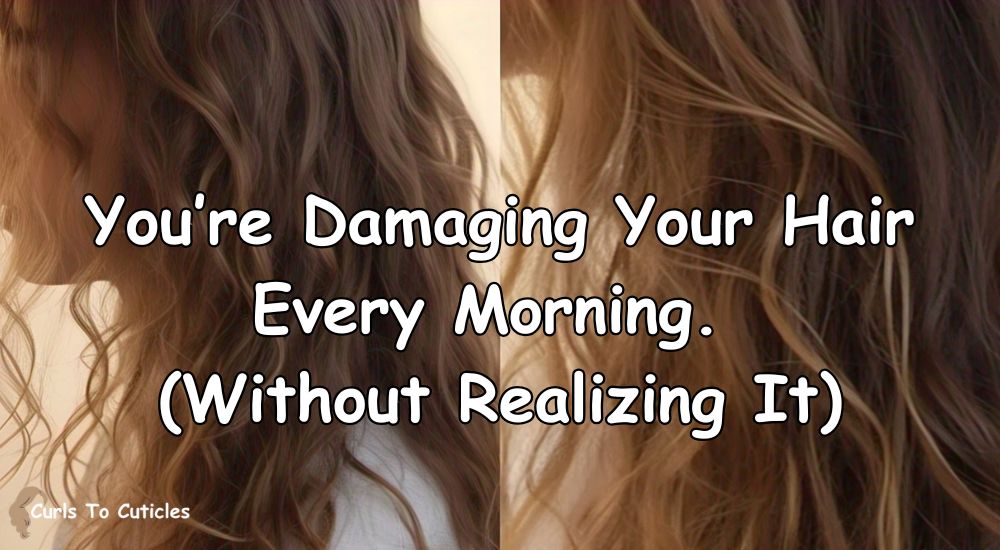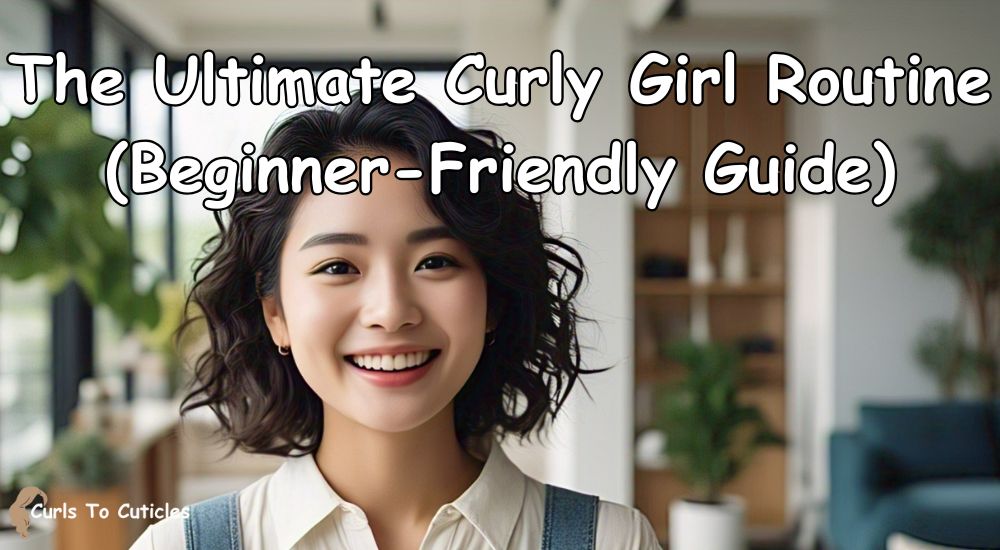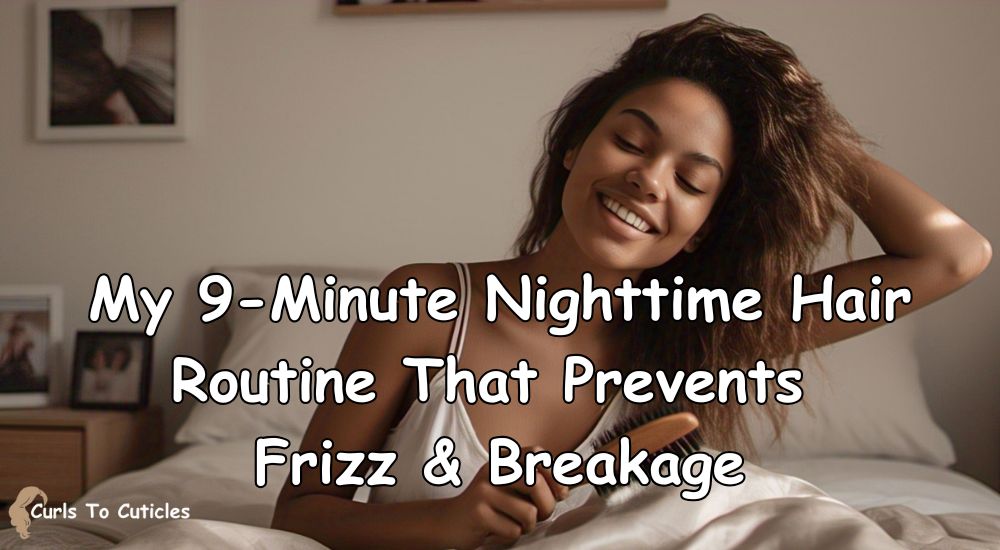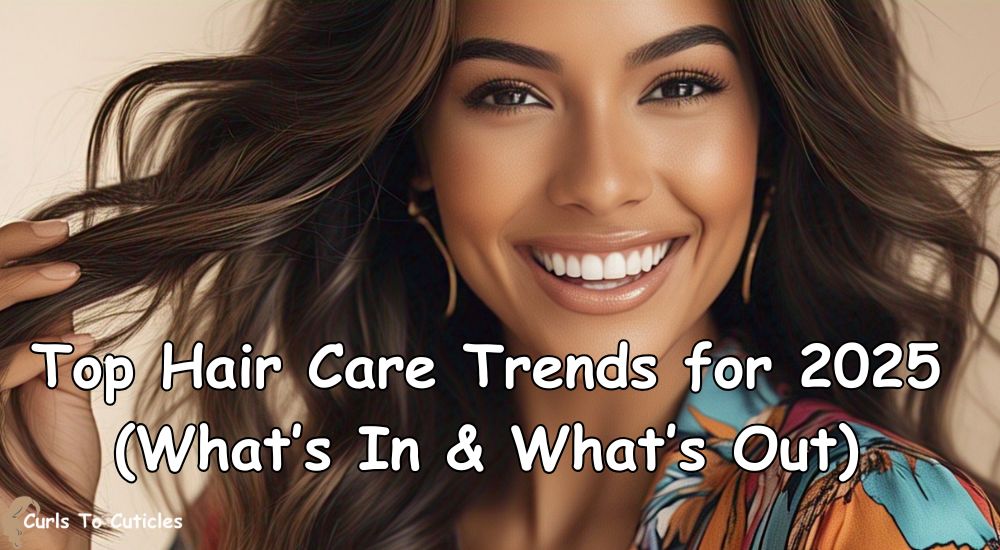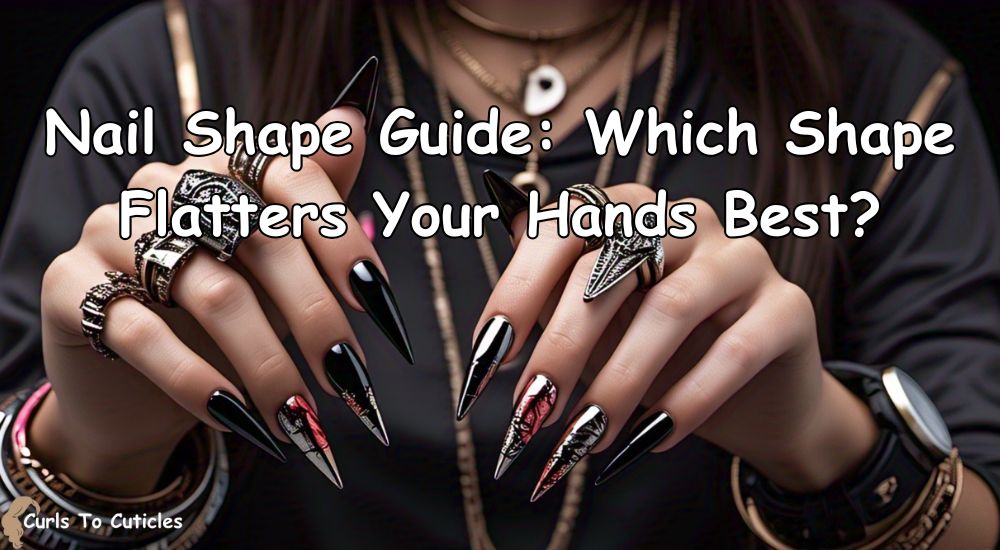Now Reading: The Best Hairstyles for Your Face Shape – Find Your Perfect Look
-
01
The Best Hairstyles for Your Face Shape – Find Your Perfect Look
The Best Hairstyles for Your Face Shape – Find Your Perfect Look
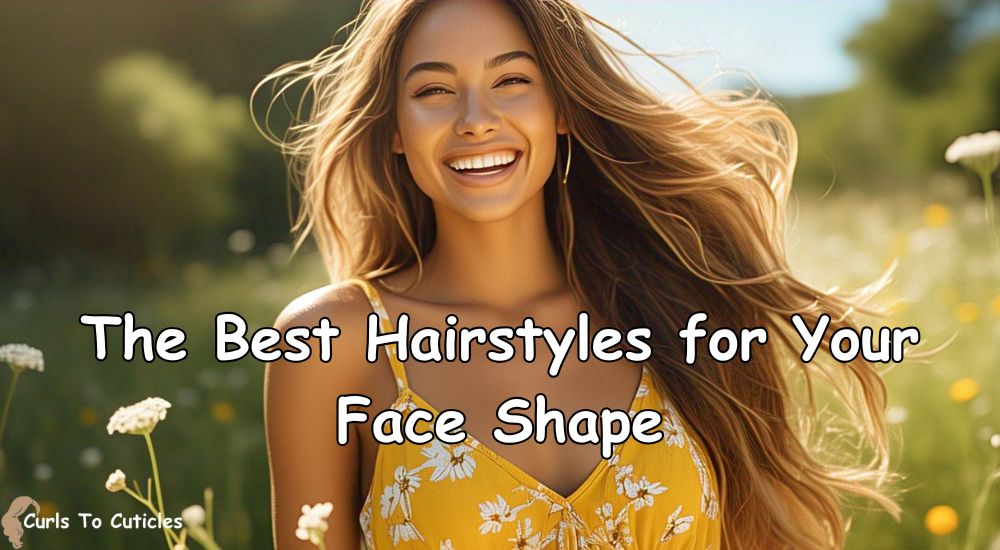
Finding the right hairstyle is easier when you know your face shape. I created this guide to help you choose styles that match your features. I kept the language clear, direct, and simple, so you can quickly understand what suits you best.
Let’s break it down by face shape. I’ll cover oval, round, square, heart, diamond, long, and triangle face shapes. I’ll also include tips for both short and long hair.
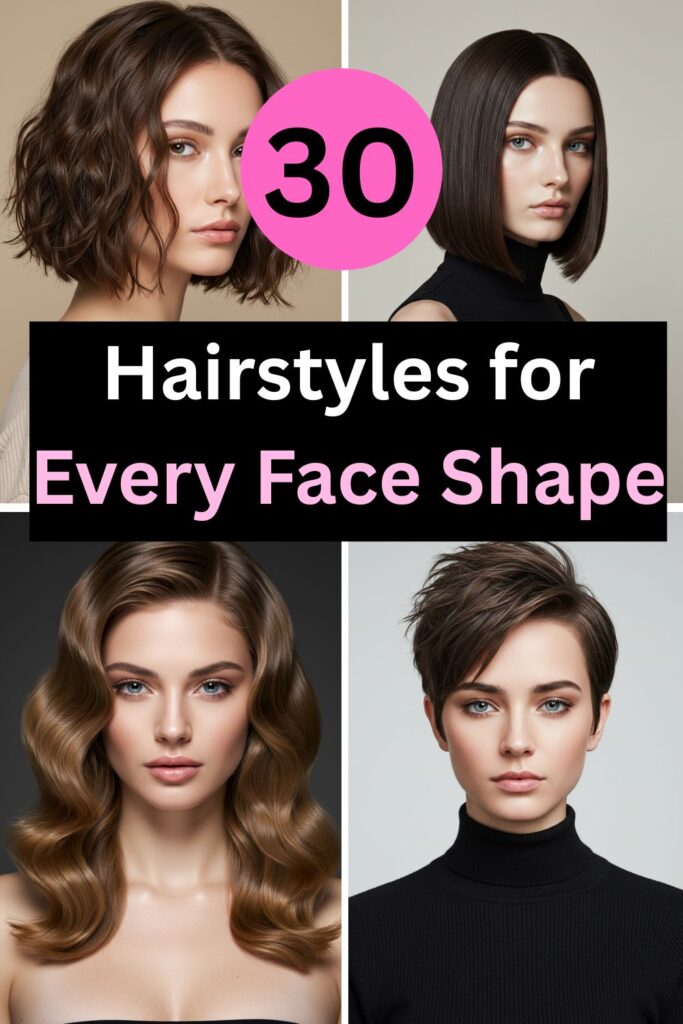
How to Identify Your Face Shape

Stand in front of a mirror. Tie your hair back. Look at your forehead, cheekbones, jawline, and chin. Use these points to define your shape. Here are quick descriptions:
- Oval: The forehead is slightly wider than the chin. The face is longer than it is wide.
- Round: The width and length are about the same. The jawline is soft and curved.
- Square: The forehead, cheeks, and jaw are the same width. The jawline is strong and angular.
- Heart: The forehead is wider than the jawline. The chin is pointed.
- Diamond: The cheekbones are the widest point. The forehead and chin are narrow.
- Long (or Oblong): The face is longer than it is wide, with a straight cheek line.
- Triangle: The jawline is wider than the forehead. The face narrows at the top.
Once you know your shape, you can find styles that balance your features.
Best Hairstyles for Oval Faces
Oval faces are naturally well-balanced and versatile, making them a canvas for nearly any hairstyle. Whether you prefer short and edgy or long and romantic, the options are limitless. Embrace the freedom to experiment and find what enhances your personality.
Short Hairstyles
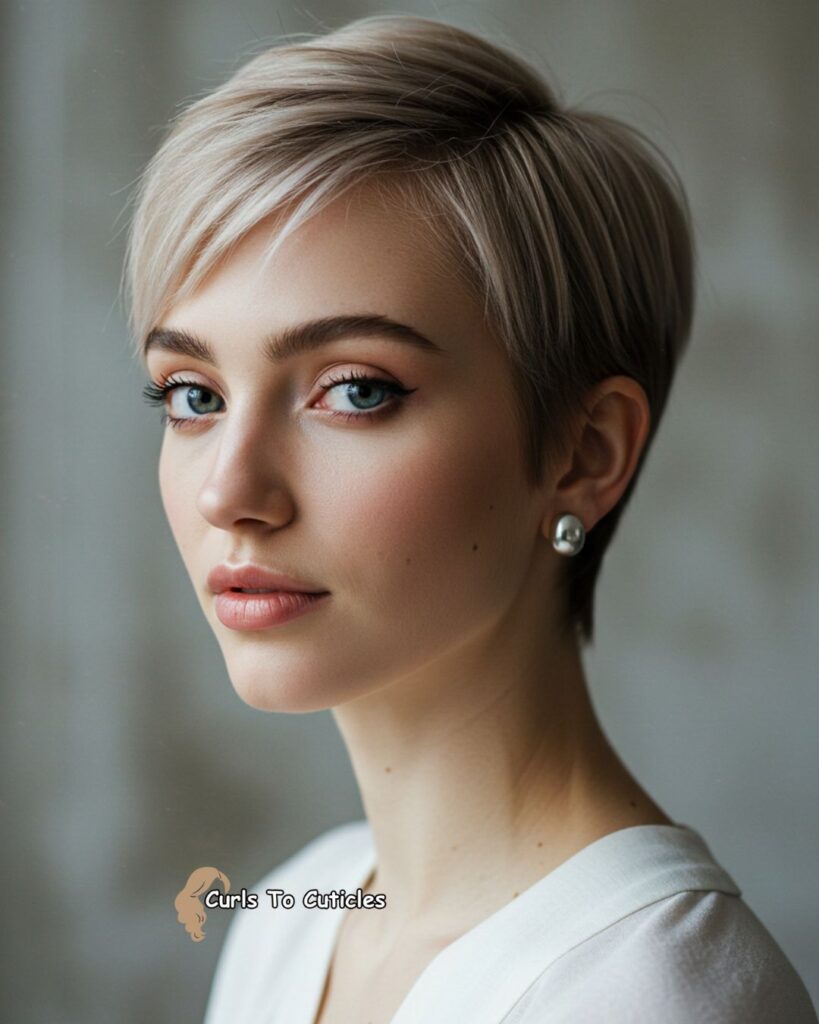
Classic pixie cuts with feathered edges are perfect for oval faces, offering a clean and modern look. You can also opt for a sleek bob that ends at the chin or just below, which draws attention to the jawline. A subtle side part adds an extra touch of elegance and asymmetry.
Medium Hairstyles
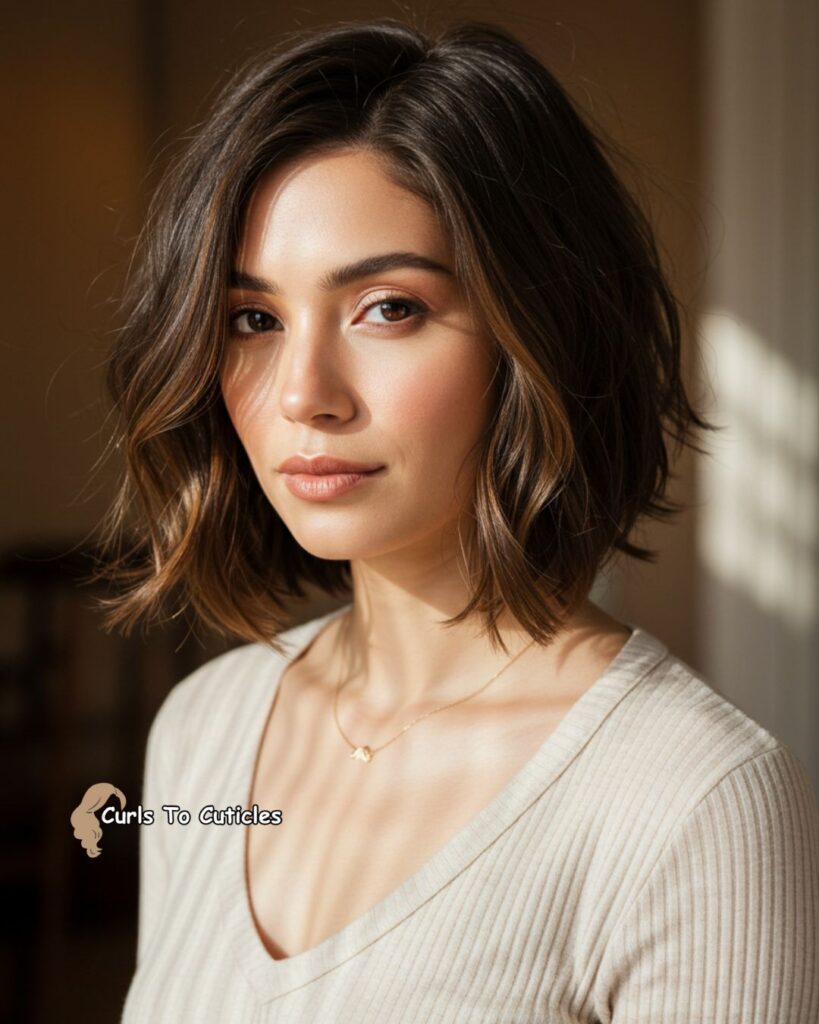
Shoulder-length cuts with gentle layers work beautifully on oval faces. Layers that frame the face create natural movement while emphasizing your features. A side part enhances softness and keeps the look fresh and flattering.
Long Hairstyles
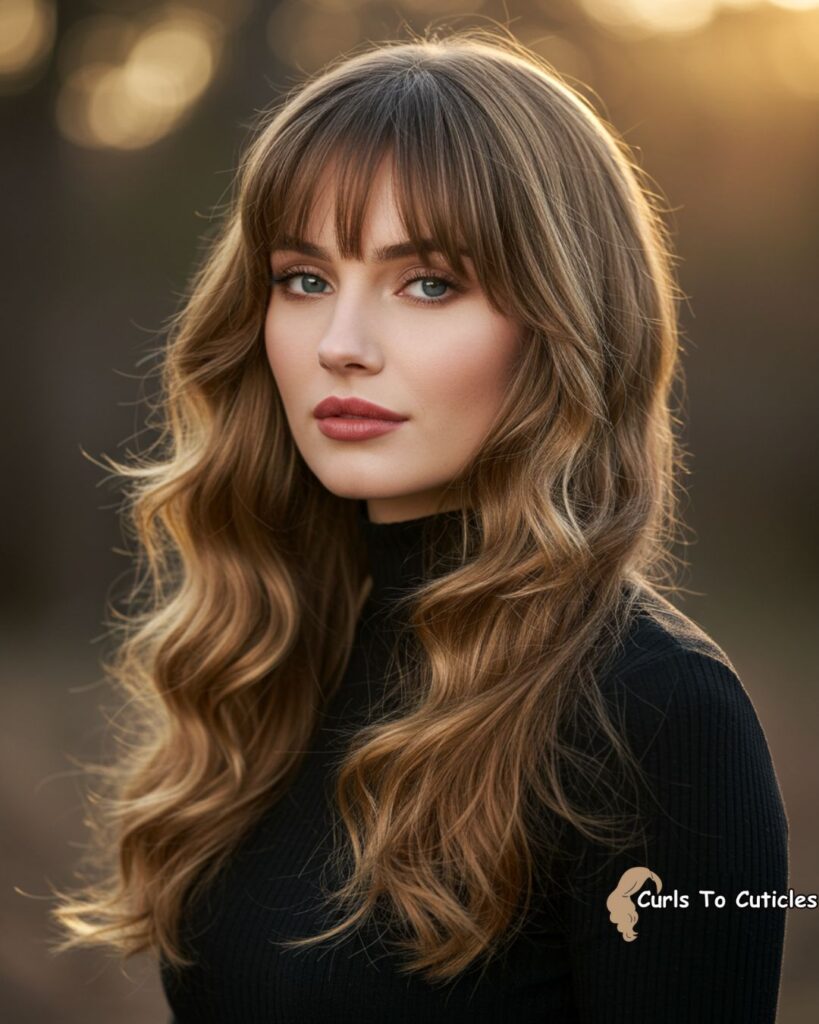
Long, flowing waves complement an oval face by adding volume while preserving balance. Consider soft curls or tapered layers for added texture and dimension. A side-swept fringe or soft bangs can elevate the overall effect with a touch of romance.
Tip: Avoid full, heavy bangs that cover your face shape—let your natural symmetry shine.
Best Hairstyles for Round Faces
Round faces benefit from styles that create length and definition. The goal is to add height and angles that visually slim and elongate the face.
Short Hairstyles
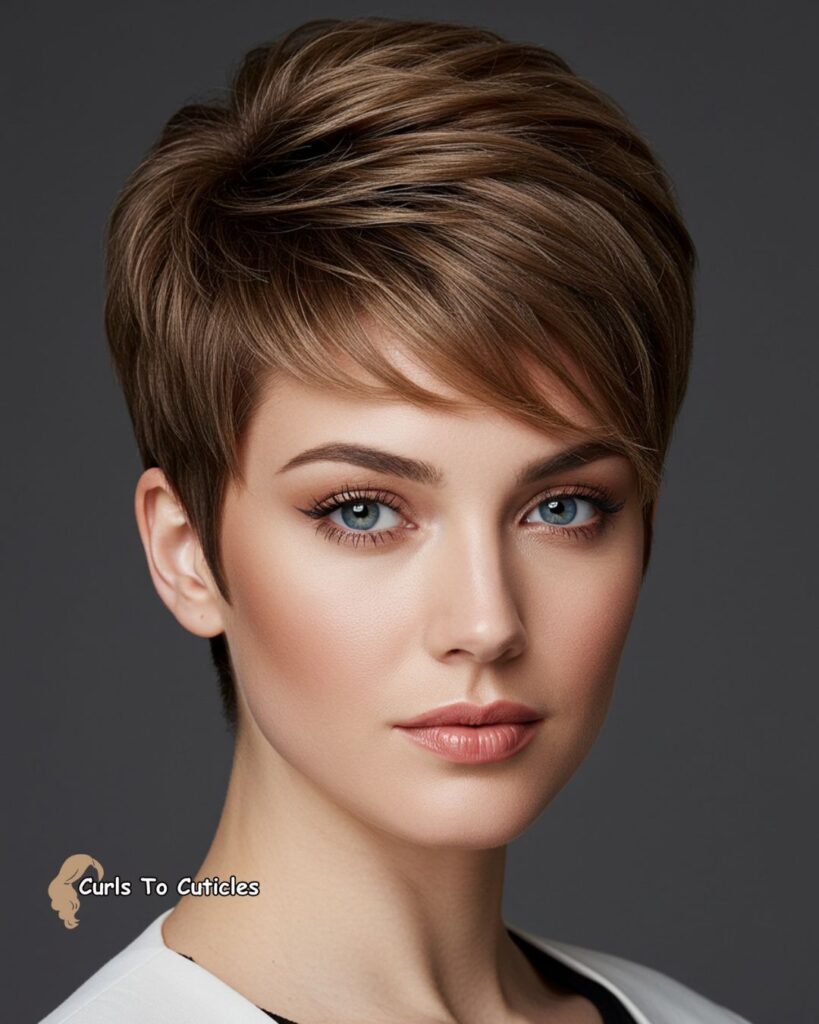
Go for short cuts with volume at the crown—think a pixie cut with lift or a textured crop. These styles draw the eyes upward and create the illusion of length. Avoid chin-length bobs, which can make the face appear wider. Instead, choose angled bobs with longer front pieces for a slimming effect.
Medium Hairstyles
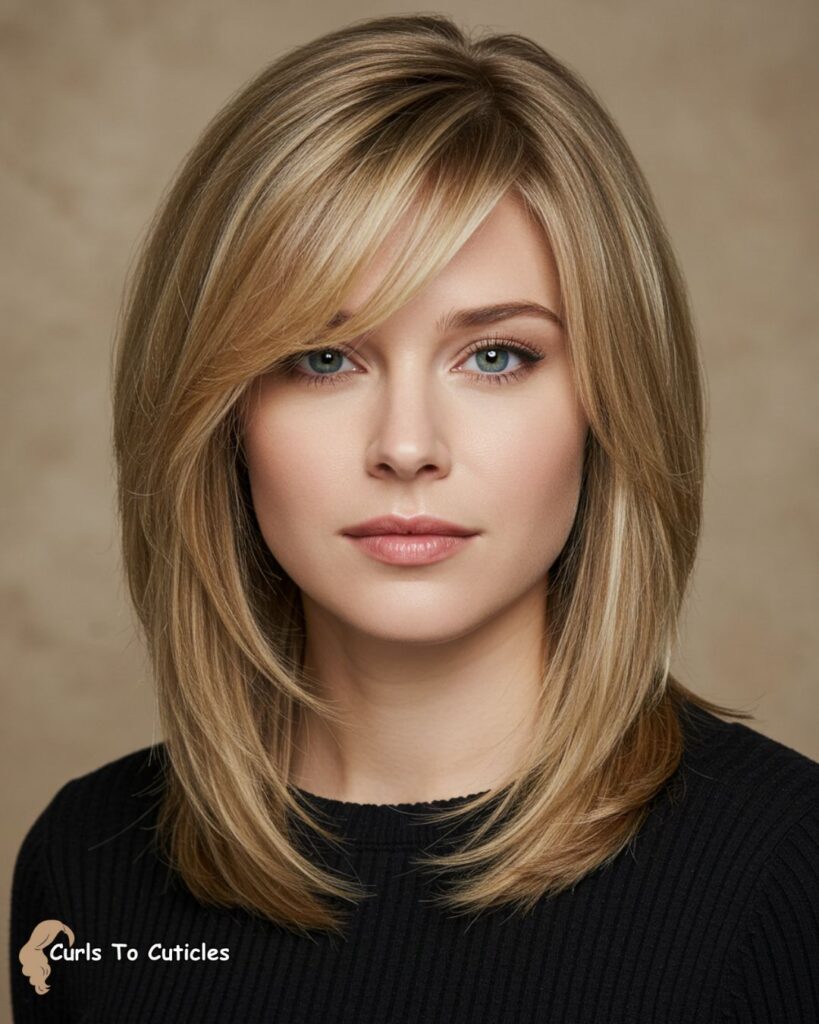
Shoulder-length styles with long, layered edges help elongate a round face. Side-swept bangs guide the eye diagonally, breaking up the circular appearance. Keep volume away from the sides of the face to prevent a fuller look.
Long Hairstyles
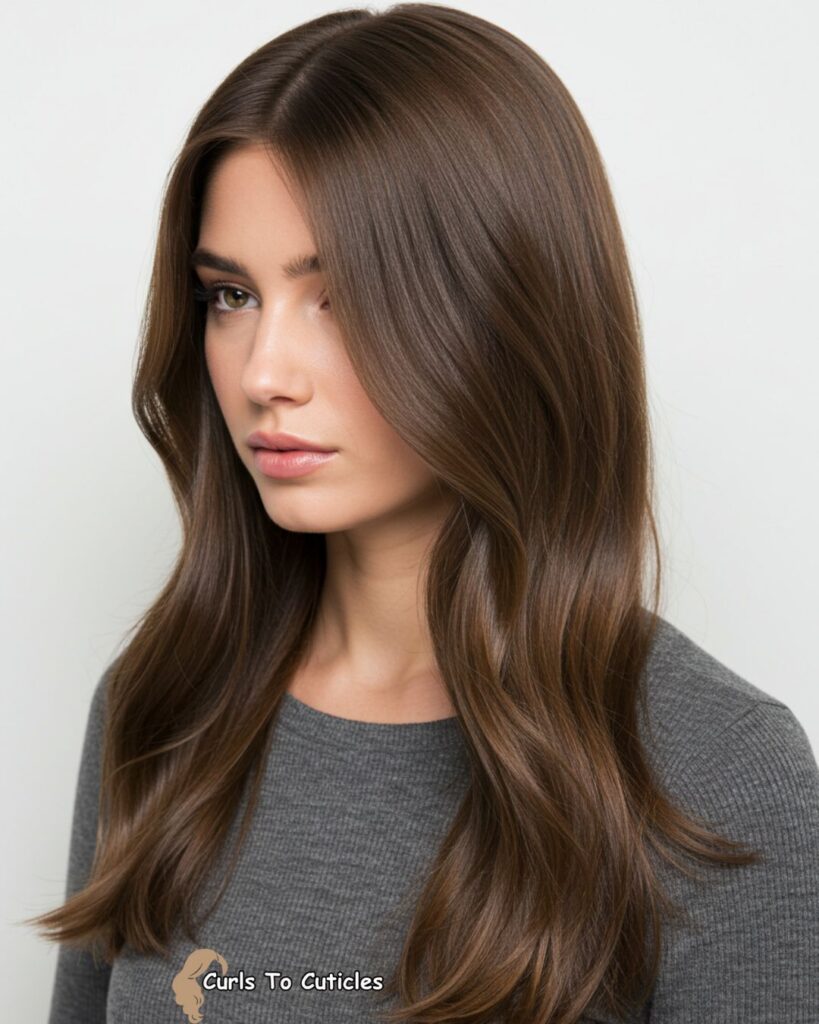
Long layers that fall below the chin are your best bet. Keep hair sleek with subtle waves beginning beneath the jawline. Tapered or feathered ends soften the look while avoiding blunt lines that can exaggerate roundness.
Tip: Focus on vertical lines and volume at the crown. Steer clear of overly round, puffy styles.
Best Hairstyles for Square Faces
Square faces are defined by strong jawlines and broad foreheads. The ideal hairstyle softens those angles and brings balance to your overall appearance.
Short Hairstyles
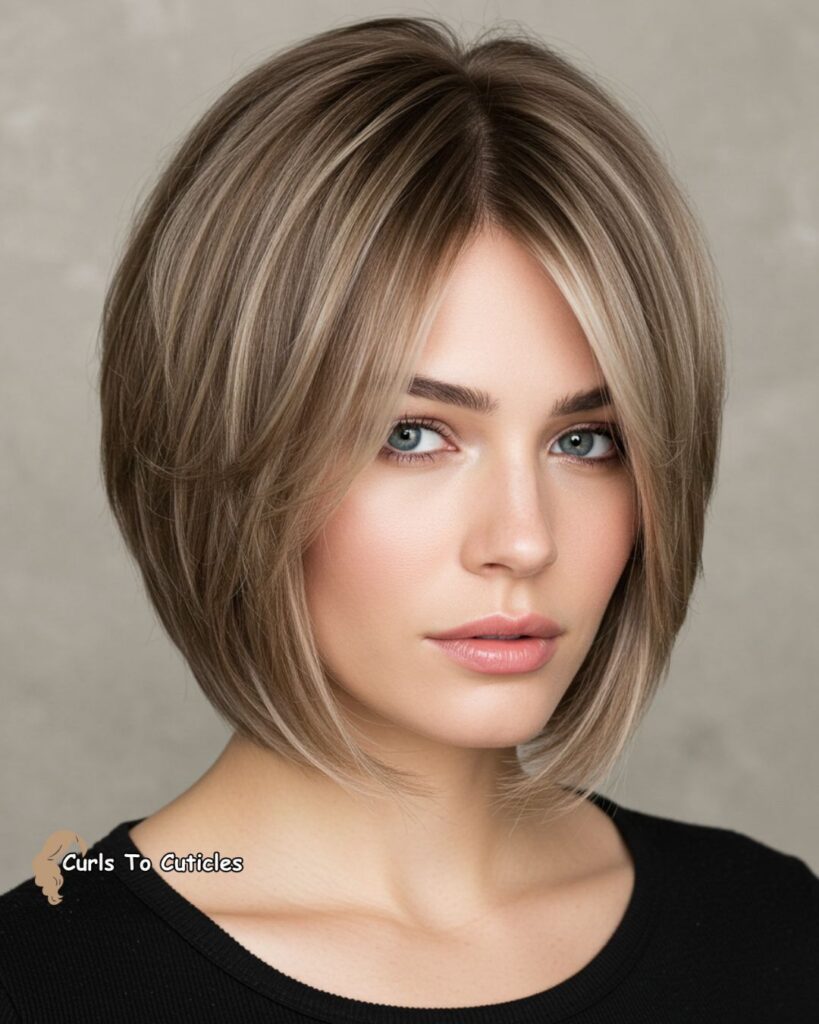
A layered bob with wispy or feathered ends is a flattering choice. A side part adds visual softness and offsets the symmetry of a square jaw. Avoid blunt, straight-across cuts, which can highlight angularity.
Medium Hairstyles
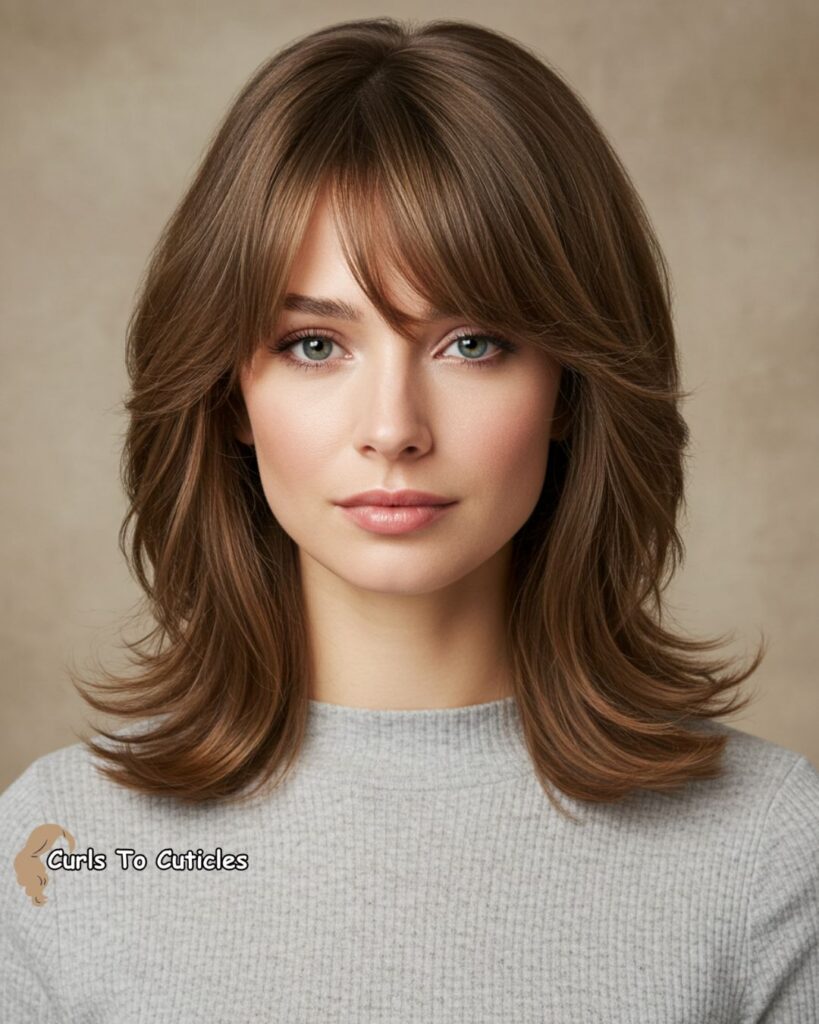
Shoulder-length cuts with long layers that begin below the chin soften the face’s sharp edges. Loose waves starting beneath the jawline help draw attention away from the lower half of the face. Add side-swept bangs or curved ends to further soften your features.
Long Hairstyles

Choose flowing styles with soft waves or curls that start below the chin. These add graceful movement and help reduce the appearance of strong lines. Avoid ultra-straight hair; curved textures bring a harmonious balance.
Tip: Round shapes and soft textures are more flattering than rigid lines. Opt for side bangs over blunt fringe.
Best Hairstyles for Heart-Shaped Faces
Heart-shaped faces feature a wider forehead and a narrow chin. Hairstyles that bring balance to the top and bottom of the face work best.
Short Hairstyles

A chin-length bob helps widen the lower part of the face, creating a more proportioned look. Pair it with side-swept bangs to minimize forehead width and soften the transition to the jaw.
Medium Hairstyles
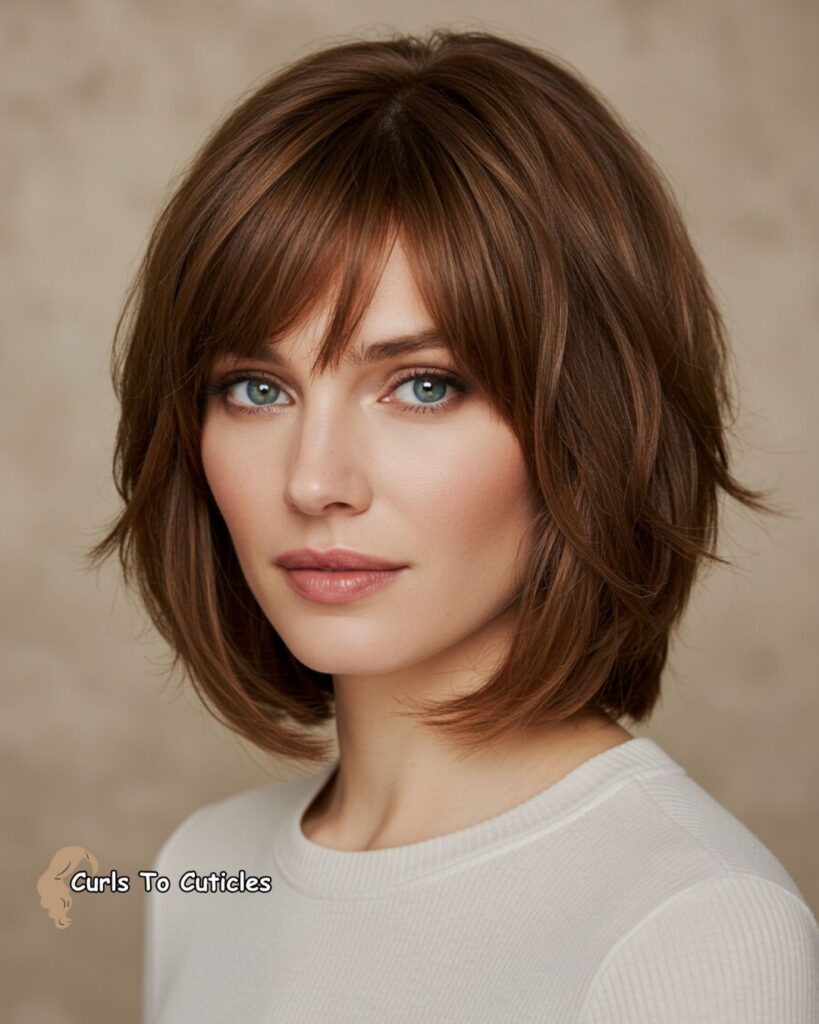
Shoulder-length layers that begin below the ears create volume around the jawline. Curtain bangs or a deep side part add softness and draw attention to the center of the face, especially the eyes.
Long Hairstyles

Long, soft waves that start below the chin enhance volume where it’s needed most. Avoid straight, flat styles that emphasize the forehead. Instead, use texture and strategic layering to guide the eye downward.
Tip: Focus on adding fullness near the jaw and cheeks. Skip high-volume crown styles and super-short bangs.
Best Hairstyles for Diamond Faces
Diamond-shaped faces have narrow foreheads and chins with prominent cheekbones. The key is to widen the upper and lower areas while minimizing width at the cheeks.
Short Hairstyles
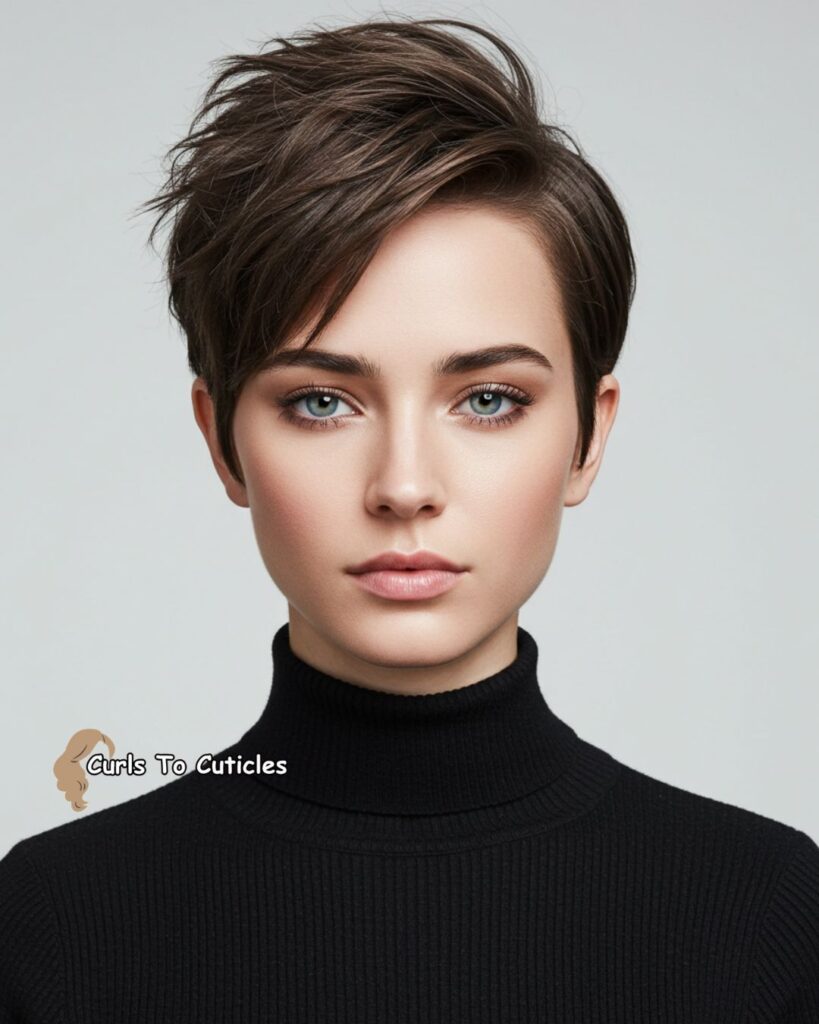
Try chin-length bobs or tousled pixie cuts with lift at the crown. Keeping volume up top and minimal on the sides balances the face and reduces cheekbone sharpness.
Medium Hairstyles
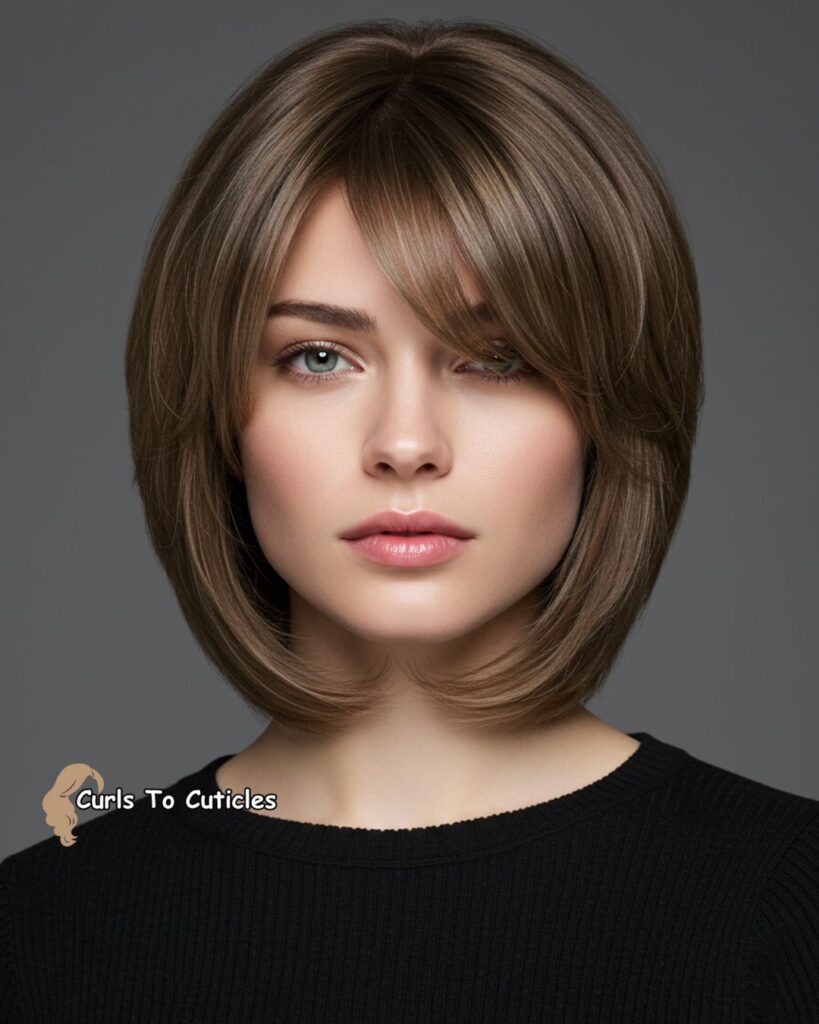
Shoulder-length hair with chin-level layers helps broaden the jawline subtly. Side-swept bangs or a soft fringe bring focus to your eyes and soften the angular features.
Long Hairstyles
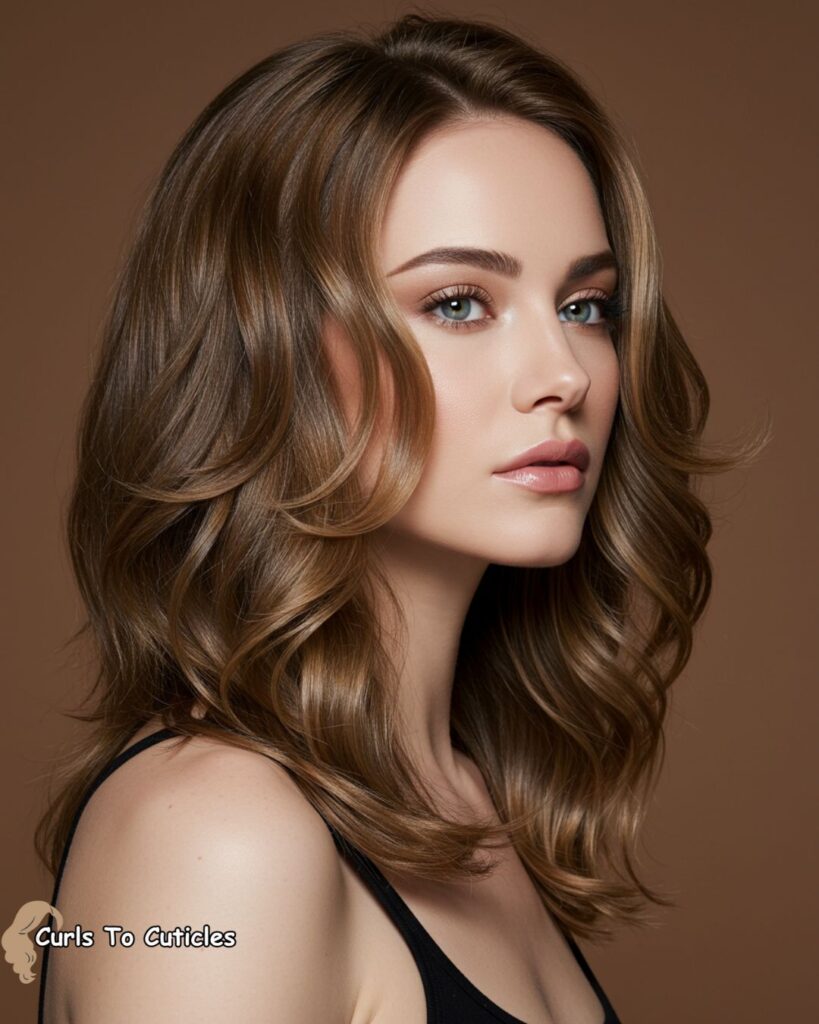
Choose long styles with soft layers starting near the chin. Waves and curls around the jawline add volume where it’s needed and create a balanced shape. Avoid styles that accentuate the cheeks too much.
Tip: Skip slicked-back looks. Add volume to the forehead and jawline, not the mid-face.
Best Hairstyles for Long Faces
Long faces are best suited to styles that reduce vertical length and add width. The goal is to create balance by emphasizing the sides of the face.
Short Hairstyles
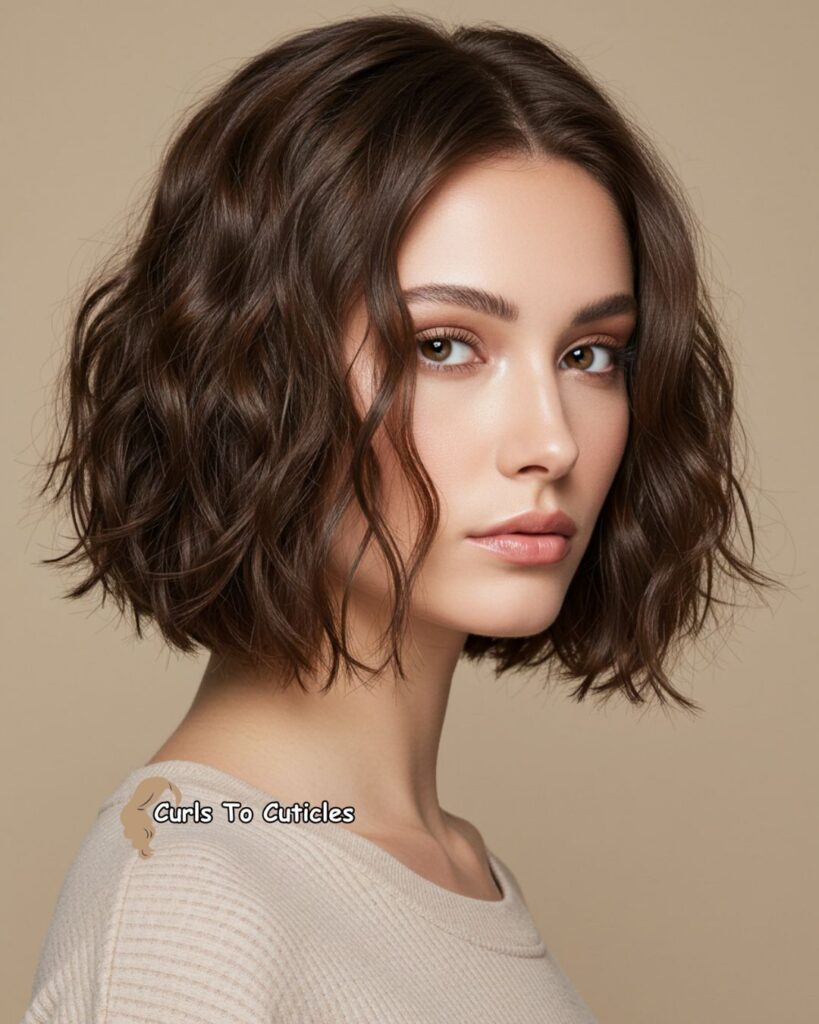
A wavy chin-length bob is perfect—it adds width and counters vertical elongation. Avoid adding height at the top, which can make the face appear even longer.
Medium Hairstyles
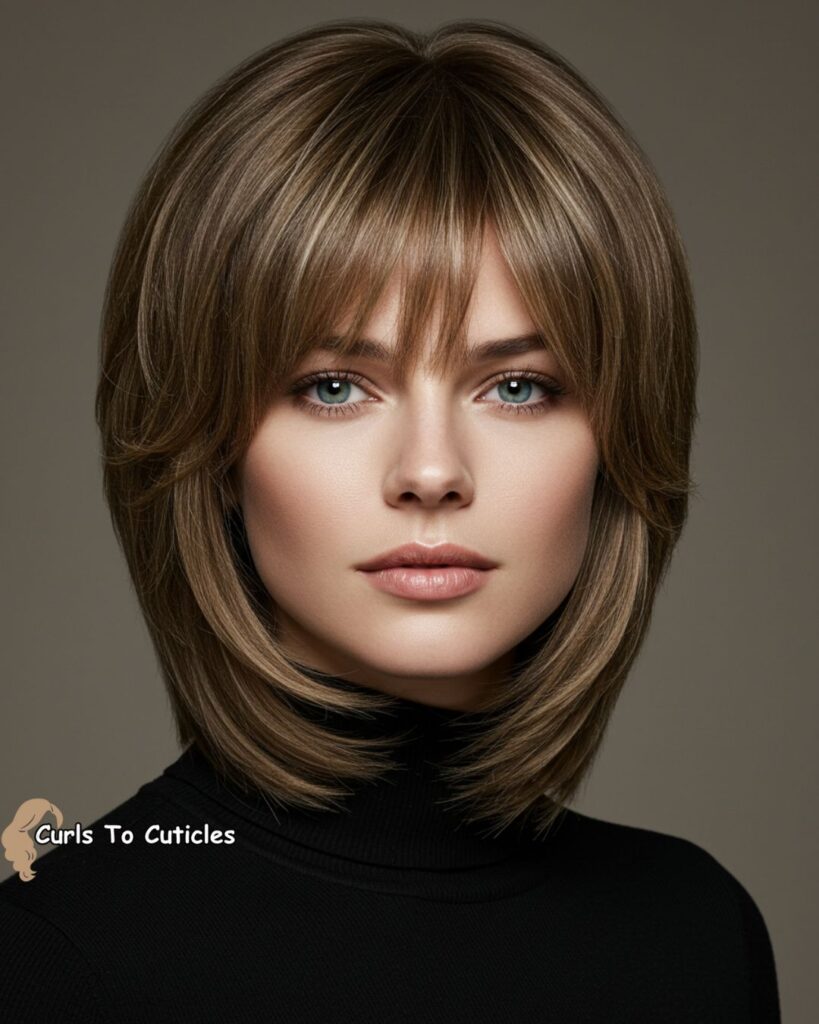
Try shoulder-length cuts with layers starting near the cheekbones. Bangs—whether blunt or curtain-style—visually shorten the face and make it appear more proportional.
Long Hairstyles
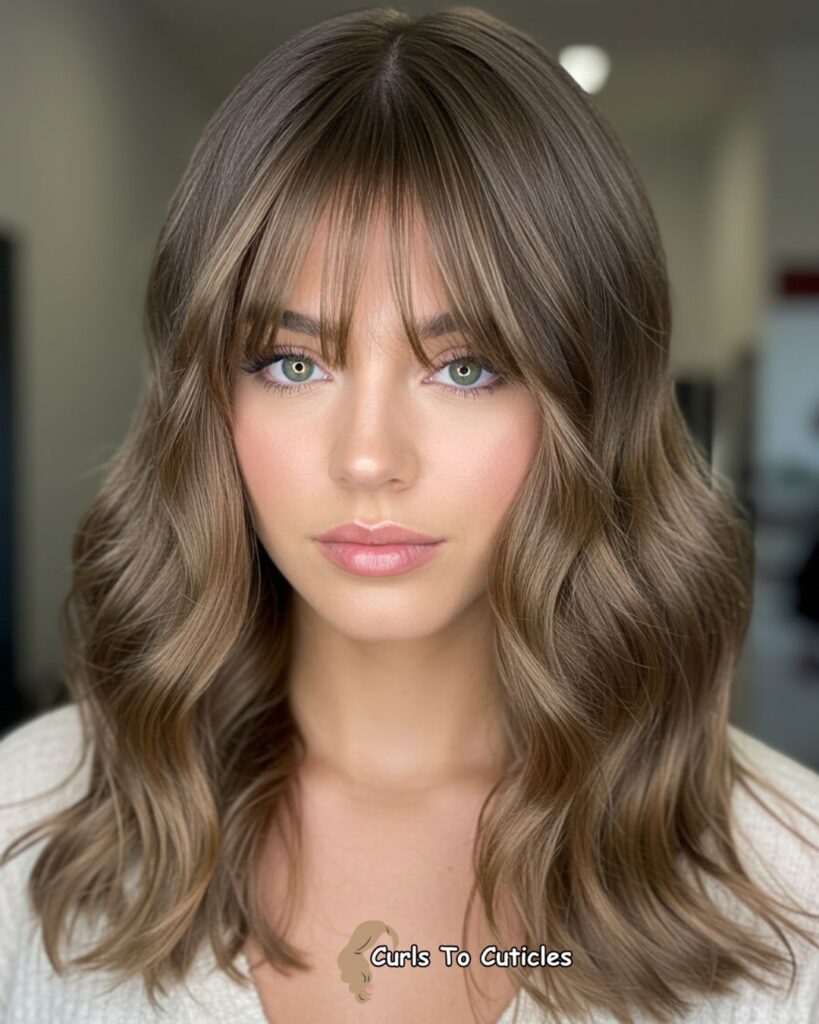
Go for soft, wavy layers with face-framing pieces. Bangs help “break up” the length, while waves on the sides create width. Avoid stick-straight styles with no shape, which only elongate the face further.
Tip: Add fullness through curls and layers. Keep volume low at the crown.
Best Hairstyles for Triangle Faces
Triangle faces are widest at the jaw and narrow at the forehead. Hairstyles that bring fullness to the upper half of the face are ideal.
Short Hairstyles

Opt for pixie cuts with volume on top to shift focus upward. Side-swept bangs can make the forehead look wider, balancing a heavier jawline. Avoid jaw-length styles that highlight the face’s widest area.
Medium Hairstyles
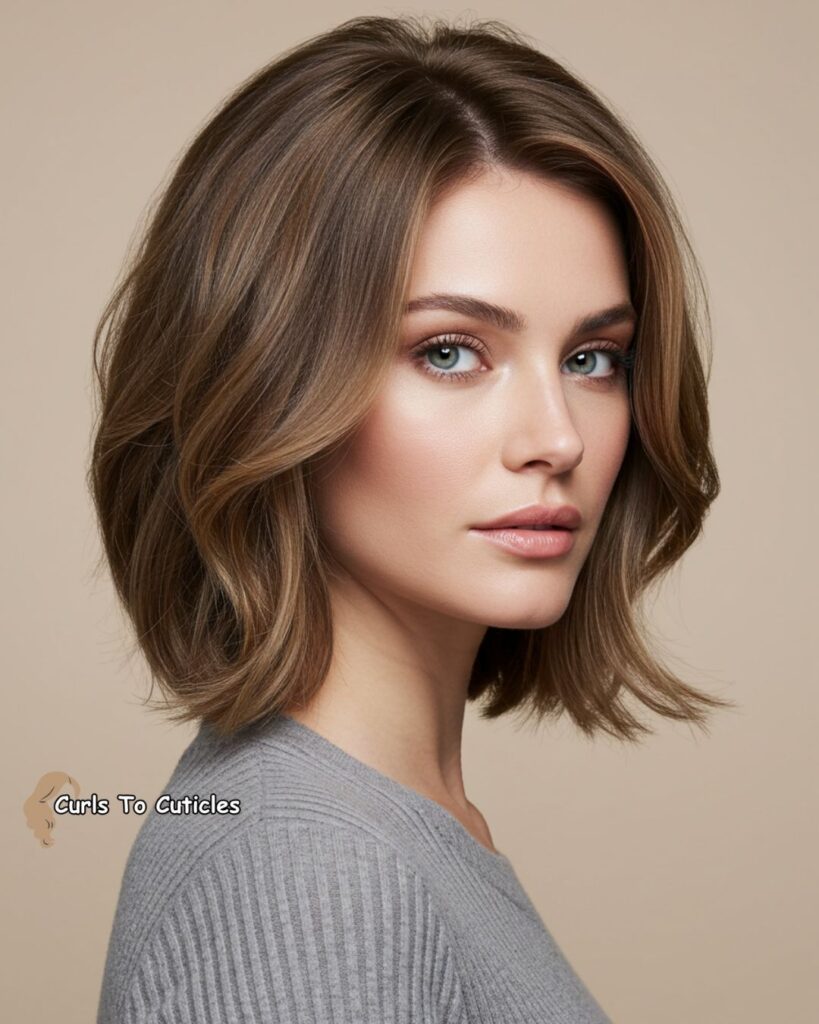
Shoulder-length styles with volume at the temples help even out the proportions. Face-framing layers and soft ends create movement while reducing emphasis on the jaw.
Long Hairstyles

Choose long styles with waves or curls that start near the top of the head and soften as they reach the chin. This shape draws attention away from the jawline. Avoid heavy ends that stop near the jaw.
Tip: Create fullness around the upper face. Stay away from blunt cuts that end at the jaw.
Choosing Hairstyles Based on Hair Type
Even if you know your face shape, your hair type also matters. Here are quick tips:
Straight Hair
This type falls naturally and often lacks volume. Add layers or waves to avoid a flat look. Long layers work for most face shapes.
Wavy Hair
Waves add softness and movement. This hair type works well with layered cuts and medium-length styles.
Curly Hair
Curly hair has volume and bounce. Use layers to shape the curls. Avoid triangle-shaped cuts where the volume sits at the ends.
Coily Hair
Tight curls need structure. Short styles with defined shapes work well. Longer coily hair should be layered to prevent bulkiness.
Download Below Infographic For Future Use
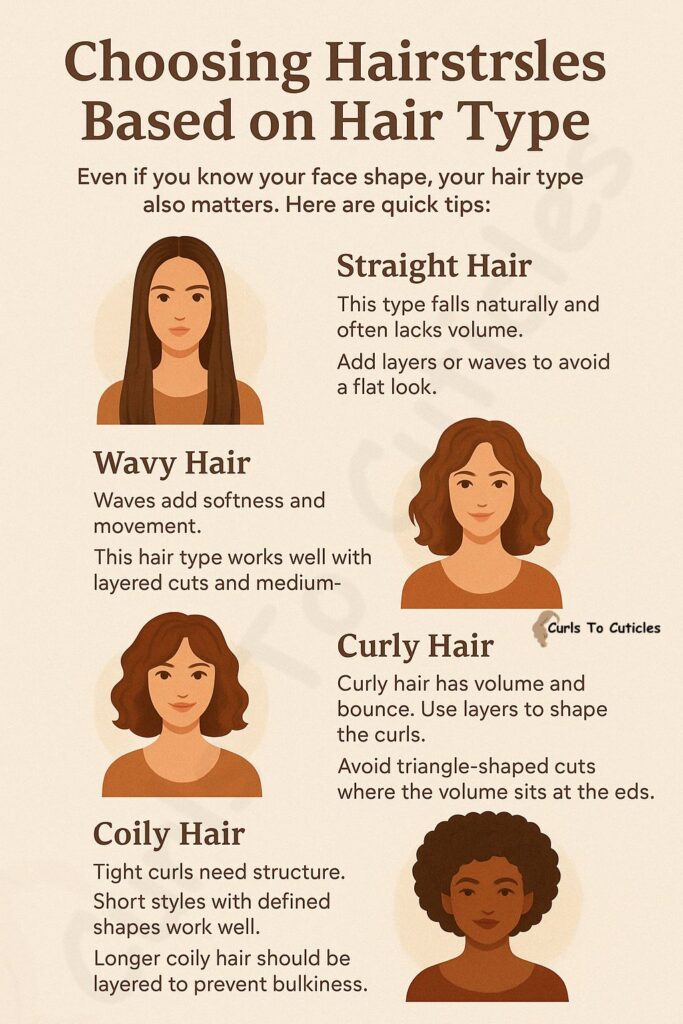
How Bangs Change Your Look
Bangs can change the way your face looks. The right bang style can help balance your features.
- Side-swept bangs soften square and heart shapes.
- Blunt bangs work for long faces but may not suit round or square shapes.
- Curtain bangs frame the face gently and work for most face shapes.
- Wispy bangs add softness without too much volume.
Choose bangs that help create the shape you want. Use them to draw attention to your eyes or soften hard lines.
Styling Tips for Each Face Shape
Oval Face

- Try a middle or side part.
- Layers help add body without changing shape.
- Updos and ponytails also work well.
Round Face
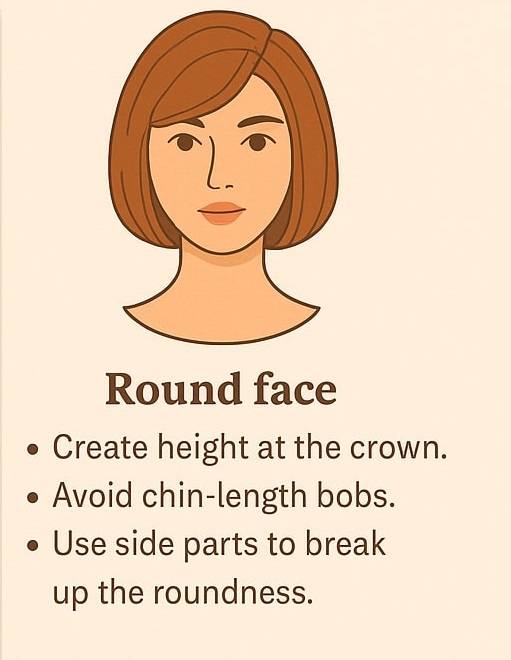
- Create height at the crown.
- Avoid chin-length bobs.
- Use side parts to break up the roundness.
Square Face
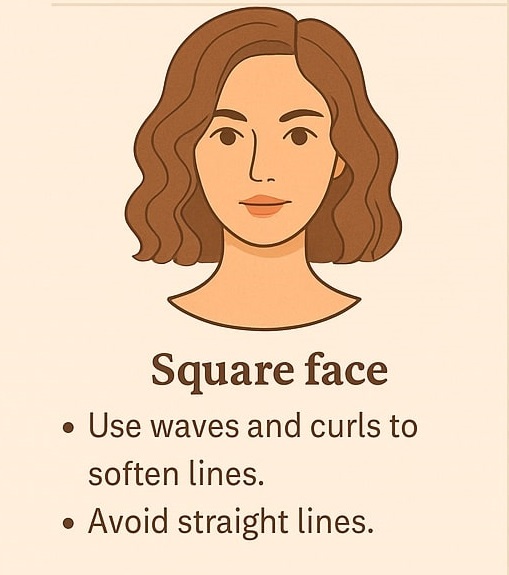
- Use waves and curls to soften lines.
- Avoid straight lines.
- A deep side part adds movement.
Heart Face
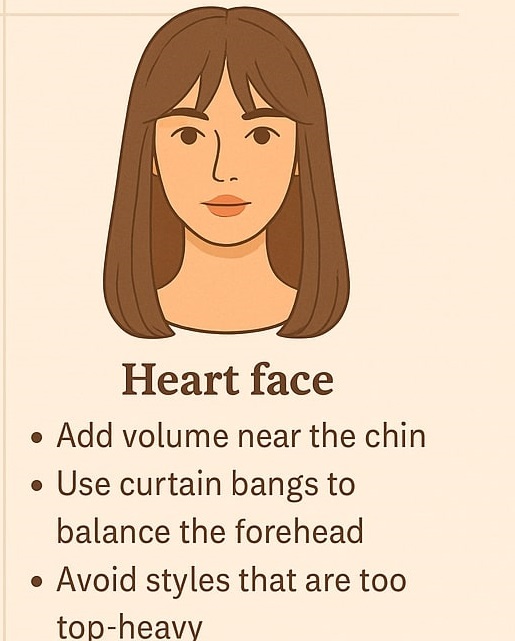
- Add volume near the chin.
- Use curtain bangs to balance the forehead.
- Avoid styles that are too top-heavy.
Diamond Face

- Add width at the forehead with bangs.
- Avoid styles that tuck behind the ears.
- Choose layered cuts that fall around the jawline.
Long Face
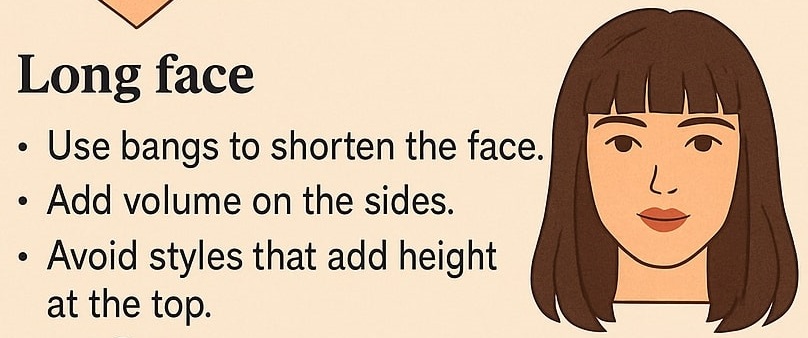
- Use bangs to shorten the face.
- Add volume on the sides.
- Avoid styles that add height at the top.
Triangle Face
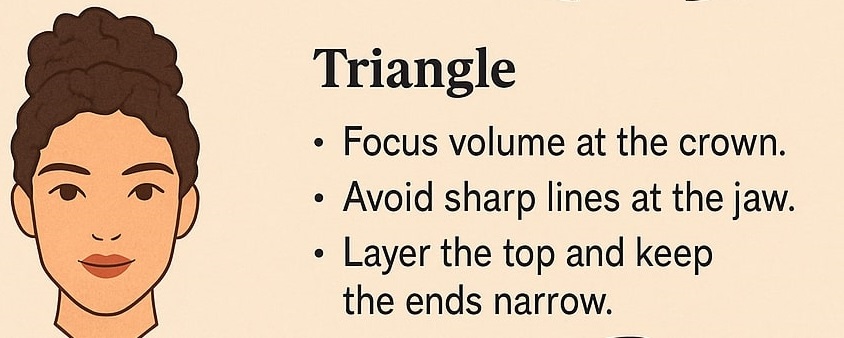
- Focus volume at the crown.
- Avoid sharp lines at the jaw.
- Layer the top and keep the ends narrow.
Easy Everyday Styles
You don’t always need a full haircut to flatter your face. Here are a few everyday styles I like to use, based on face shape:
- Ponytails: High ponytails work well for round and heart-shaped faces. Low ponytails work better for square and long faces.
- Buns: Top knots suit oval and round faces. Low buns help soften long and square faces.
- Braids: Side braids soften strong jawlines. Crown braids add width to narrow foreheads.
Adjust each style to suit your shape. Use bobby pins, parting changes, and accessories to make quick changes.
More Visual Explanation
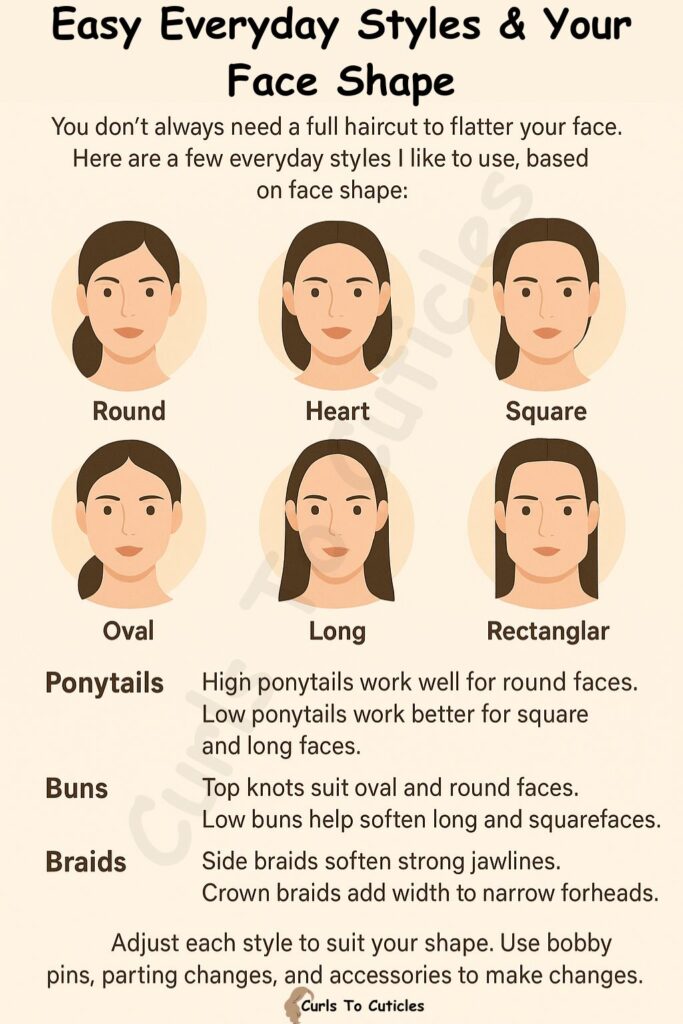
Final Thoughts
The right hairstyle brings out your best features. Once you know your face shape, you can make smarter style choices. Don’t be afraid to try new looks. Start with small changes. See what works best for you.
Remember, the shape of your face is only one part of the picture. Your hair texture, lifestyle, and personal taste matter too. Combine what you learn here with your own preferences. This way, you get a look that feels right and looks great.


